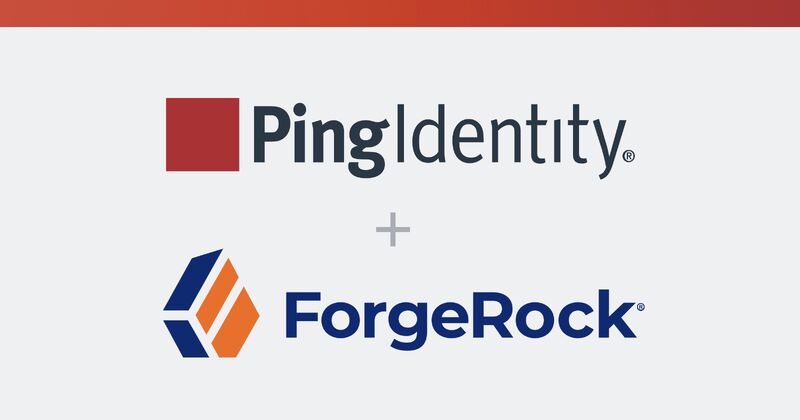Introduction:
In the ever-evolving landscape of digital identity and security, the recent merger between Ping Identity and ForgeRock has sent ripples through the industry. Both companies have long been stalwarts in the Identity and Access Management (IAM) space, each with a rich history of providing robust solutions to enterprises worldwide. As the dust settles on this merger, potential customers find themselves at a crossroads, wondering whether the integration of these two giants will render their individual products obsolete or if there is still a compelling need to invest in each company’s offerings.
Understanding the Merger:
Ping Identity and ForgeRock, both pioneers in the IAM sector, announced their merger with the promise of delivering unparalleled solutions for identity-centric security challenges. The consolidation of these industry leaders brings together a wealth of expertise, technological prowess, and a broader product portfolio. The merger is not a mere acquisition but a strategic move to create a comprehensive suite of identity solutions that can address the complex and evolving needs of modern enterprises.

Key Benefits of the Merger:
- Expanded Product Portfolio: The merger has resulted in an expanded product portfolio that combines the strengths of both companies. Ping Identity’s expertise in single sign-on (SSO) and multi-factor authentication (MFA) complements ForgeRock’s capabilities in identity governance and customer identity and access management (CIAM). This synergy presents customers with a holistic solution that covers a broader spectrum of identity-related challenges.
- Enhanced Scalability and Flexibility: The integration of Ping Identity and ForgeRock technologies brings about a new level of scalability and flexibility. Customers can now scale their identity infrastructure seamlessly, adapting to the dynamic demands of their business. The merger aims to provide a unified platform that can grow with organizations, accommodating changes in size, structure, and technological requirements.
- Improved Interoperability: One of the primary concerns for organizations dealing with IAM solutions is interoperability. The merger addresses this by fostering improved integration between Ping Identity and ForgeRock products. This ensures smoother operations and a more cohesive user experience, as organizations can leverage the strengths of each solution without facing compatibility issues.
Need for Individual Products:
While the merger promises a unified and comprehensive solution, the need for potential customers to consider each company’s individual products persists. Here are some scenarios where investing in both Ping Identity and ForgeRock solutions may still be advantageous:
- Specialized Use Cases: Depending on the nature of an organization’s operations, certain specialized use cases may be better addressed by individual products from Ping Identity or ForgeRock. For example, if an organization places a high emphasis on customer identity management, ForgeRock’s CIAM solutions may offer specific features tailored to those needs.
- Existing Implementations: Organizations that have already implemented either Ping Identity or ForgeRock solutions may find it more practical to continue with their current setup. The cost and disruption associated with migrating to a fully integrated solution may outweigh the benefits for some enterprises, especially if their existing system meets their requirements adequately.
- Customization Requirements: Some enterprises require a high degree of customization in their identity management solutions to align with unique business processes. In such cases, it may be more beneficial for organizations to continue using the specific products that allow for greater customization without sacrificing functionality.
- Regulatory Compliance: Different industries and regions often have specific regulatory requirements related to identity and access management. Depending on the regulatory landscape that an organization operates in, one of the individual products may offer features or certifications that better align with compliance needs.
Conclusion:
The merger of Ping Identity and ForgeRock marks a significant chapter in the evolution of identity and access management solutions. The combined strengths of these two industry giants present a compelling proposition for enterprises seeking a comprehensive IAM platform. However, the decision to invest in individual products or opt for the integrated solution depends on various factors, including the organization’s specific needs, existing implementations, and regulatory considerations. In this era of digital transformation, the ability to navigate these decisions wisely will play a crucial role in ensuring the security and efficiency of an organization’s identity management infrastructure.
Key Takeaways:
- Evaluate Specific Needs: Organizations should conduct a thorough assessment of their identity management requirements, considering factors such as specialized use cases, customization needs, and the importance of compliance with industry-specific regulations. This evaluation will help determine whether the integrated solution or individual products better align with the organization’s unique demands.
- Consider Existing Implementations: The cost and disruption associated with migrating to a fully integrated solution may influence the decision-making process. Enterprises with existing implementations of Ping Identity or ForgeRock products should carefully weigh the benefits of transitioning against the advantages offered by their current setup. In some cases, maintaining the status quo may be a pragmatic choice.
- Strategic Approach to Scalability: Scalability and flexibility are critical aspects of identity and access management. Organizations should adopt a strategic approach to scalability, considering the potential growth of their user base and the evolving nature of their operations. The integrated solution offers enhanced scalability, but individual products may still be preferable for certain scenarios, emphasizing the importance of aligning scalability needs with the chosen identity management strategy.

This insightful article has been generously contributed by Rob Church, offering our audience a unique and informed perspective on the evolving realm of identity solutions.